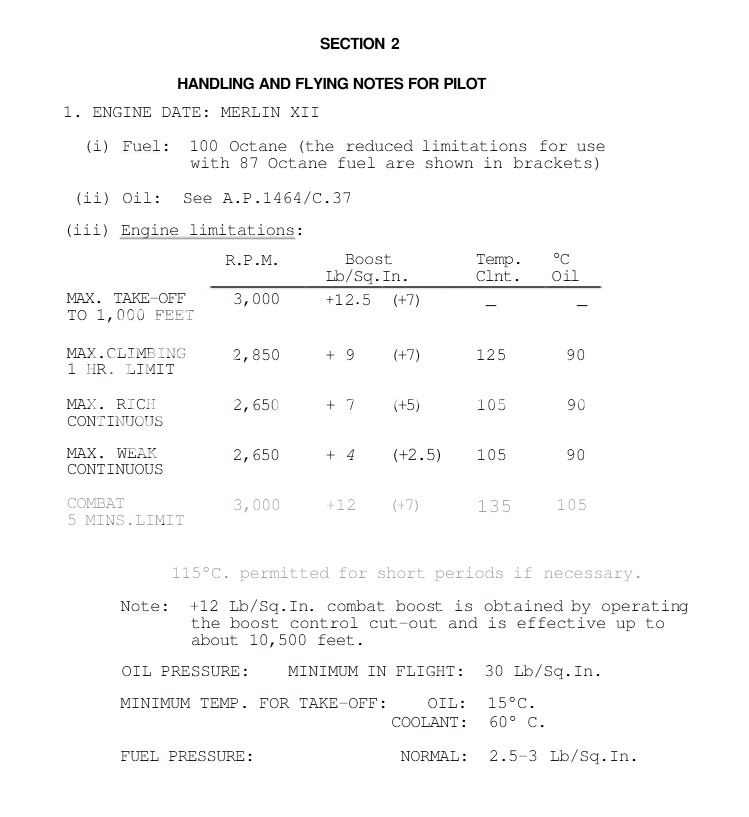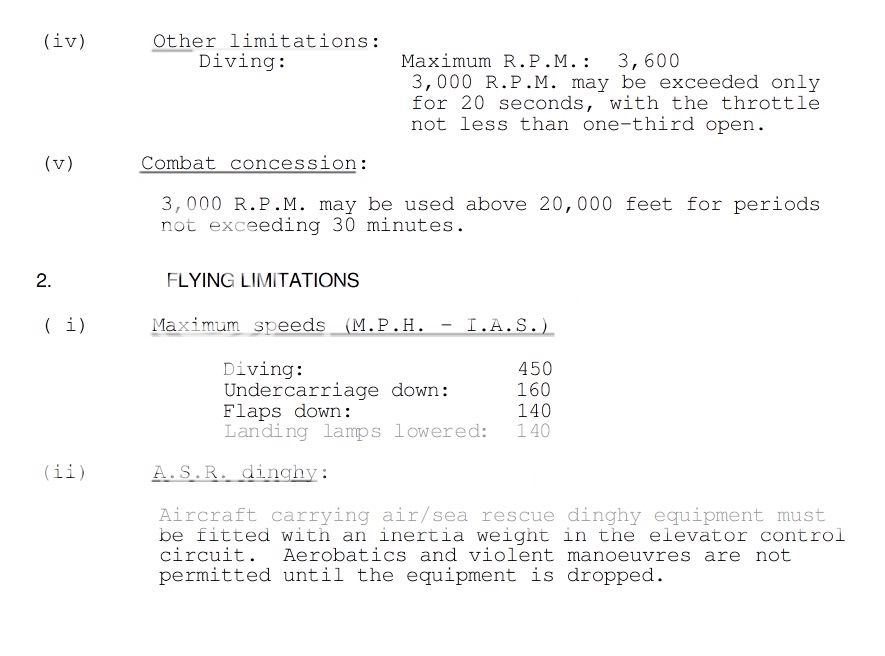
 |
|
|||||||
| FM/DM threads Everything about FM/DM in CoD |
 |
|
|
Thread Tools | Display Modes |
|
#141
|
||||
|
||||
|
Quote:

|
|
#142
|
|||
|
|||
|
Quote:
Not sure where the "cruise" reference came from but cruise, by definition, is the range of power settings that provide the best level flight fuel efficiency. That is what all pilots mean by cruise - fuel efficient flight. Whilst you may be able to use climb power to sustain high speed level flight there is no way climb power is a "cruise" condition, that is just stupid. Its important to get definitions right or these threads devolve into pointless arguments about exactly what a term actually means. Maybe you are permitted to use climb power for sustained high speed flight, but calling that "cruise" just confuses the issue. Last edited by WTE_Galway; 05-14-2012 at 06:36 AM. |
|
#143
|
|||
|
|||
|
Quote:
My impression is that the Merlin XII - as we have it know - is modeled more like a Merlin III running 100 octane (with +8? instead of +12 emergency boost). |
|
#144
|
|||
|
|||
|
Quote:
About "cruising" definition. In RAF terminology there are 2 "cruising" or "continuous" ratings. The higher one ("rich continuous") is the maximum power that can be obtained without time limit and if the engine runs at this setting it will have a reasonable life time of 100 hours. Everything setting above that shortens the engine life at a higher rate. Everything below that setting will lengthen the engine life. The lower one ("weak continuous") is for the limit for the use of mixture control at "auto weak". This is a simplified guideline for best fuel efficiency, however there are many factors the influence best fuel efficiency. More details about how to obtain best fuel efficiency are typically given in the Pilot's Notes of each aircraft. |
|
#145
|
|||
|
|||
|
Quote:
First of all it would be a much more correct representation of all planes. The even just 2-3% would mean +/- 10-15km/h difference, so folks could not build their fights on tiny speed advantages at certain height levels. But then I guess that those crying for 'historical' performance now would turn that 'variable performance' off for their dogfight servers... +++++ |
|
#146
|
|||
|
|||
|
Quote:
http://www.scribd.com/doc/46069063/1...e-II-Aeroplane Quote:
 
Last edited by 5./JG27.Farber; 05-14-2012 at 11:20 AM. |
|
#147
|
||||
|
||||
|
Quote:
You have it right here: Quote:
It would be more accurate to say: Everything setting above that is an overload condition which can cause the engine to fail. Everything below that setting is the stress conditions the motor was built to withstand continuously. |
|
#148
|
||||
|
||||
|
Quote:
|
|
#149
|
|||
|
|||
|
Umm! Most civil operating handbooks will denote a normal climb speed which is also known as Cruise Climb speed. The Cruise climb speed is the airspeed that you can climb for extended peiods without over heating the engine. Cruise climb is used in cross country flight where rate of climb is not an issue.
|
|
#150
|
|||
|
|||
|
Pilot's Notes General 2nd Edition from 1943 states that the time limit for climb rating was increased from 30 minutes to 1 hour.
|
 |
| Thread Tools | |
| Display Modes | |
|
|